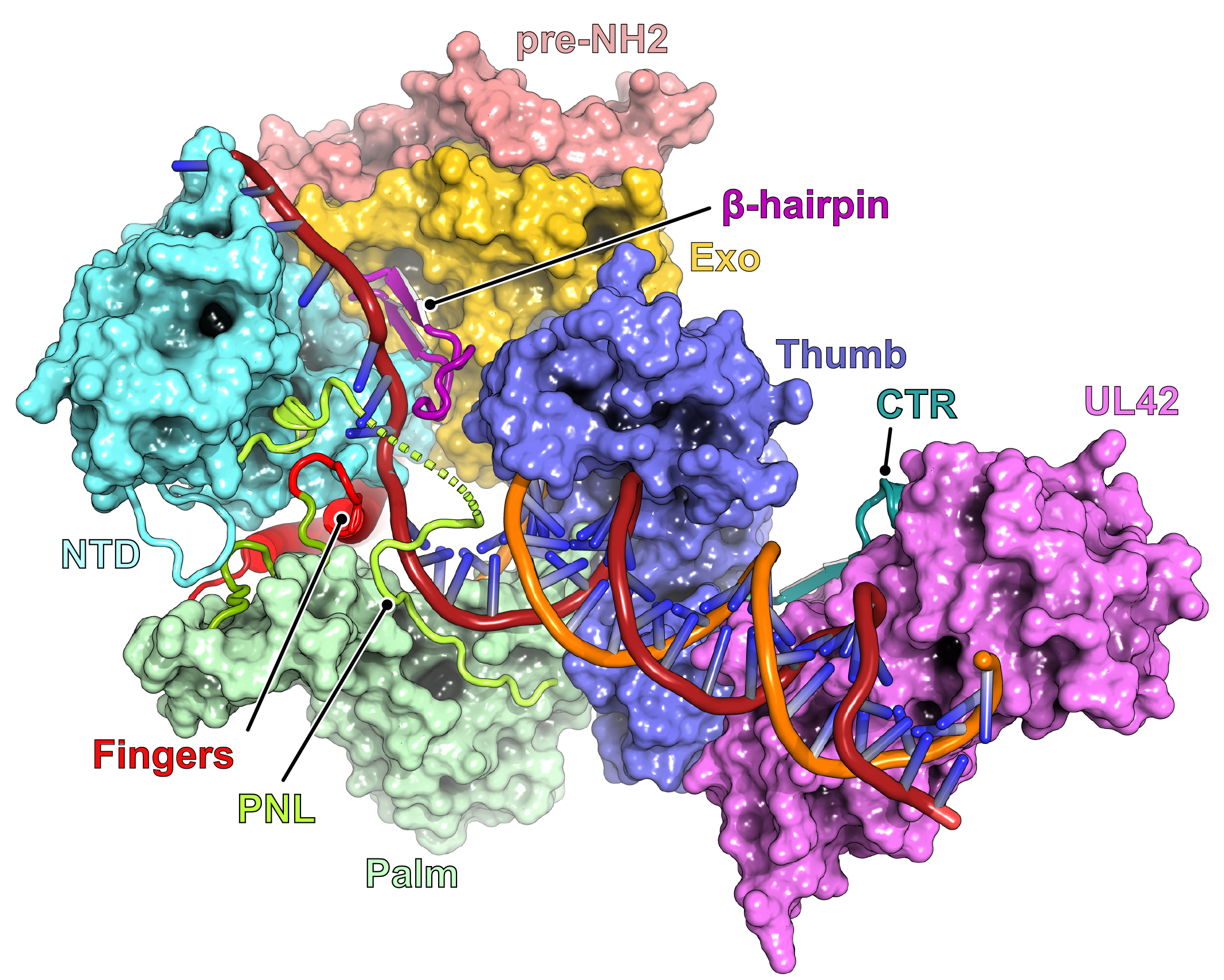
At a glance:
New research explains how herpes simplex virus can develop resistance to antiviral medicines.
Study shows that movements in specific parts of a protein that enable viral replication can alter susceptibility to drugs.
The findings answer long-standing questions about viral drug resistance and can inform new approaches to designing more effective therapies.
All organisms — from fungi to mammals — have the capacity to evolve and adapt to their environments. But viruses are master shapeshifters with an ability to mutate greater than any other organism. As a result, they can evade treatments or acquire resistance to once-effective antiviral medications.
Working with herpes simplex virus (HSV), a new study led by Harvard Medical School researchers sheds light on one of the ways in which the virus becomes resistant to treatment, a problem that could be particularly challenging among people with compromised immune function, including those receiving immune-suppressive treatment and those born with immune deficiencies.
Using a sophisticated imaging technique called cryogenic electron microscopy (cryo-EM), the researchers found that how parts of a protein responsible for viral replication move into different positions can alter the virus’s susceptibility to medicines.
Authorship, funding, disclosures
Additional authors included Sundaresh Shankar, Junhua Pan, Pan Yang, Yuemin Bian, Gábor Oroszlán, Zishuo Yu, Purba Mukherjee, David J. Filman, James M. Hogle, Mrinal Shekhar.
This work was supported by the National Institutes of Health (awards R21 AI141940 and R01 AI19838), with additional funding from a Centers for Integrated Solutions in Infectious Diseases grant.




